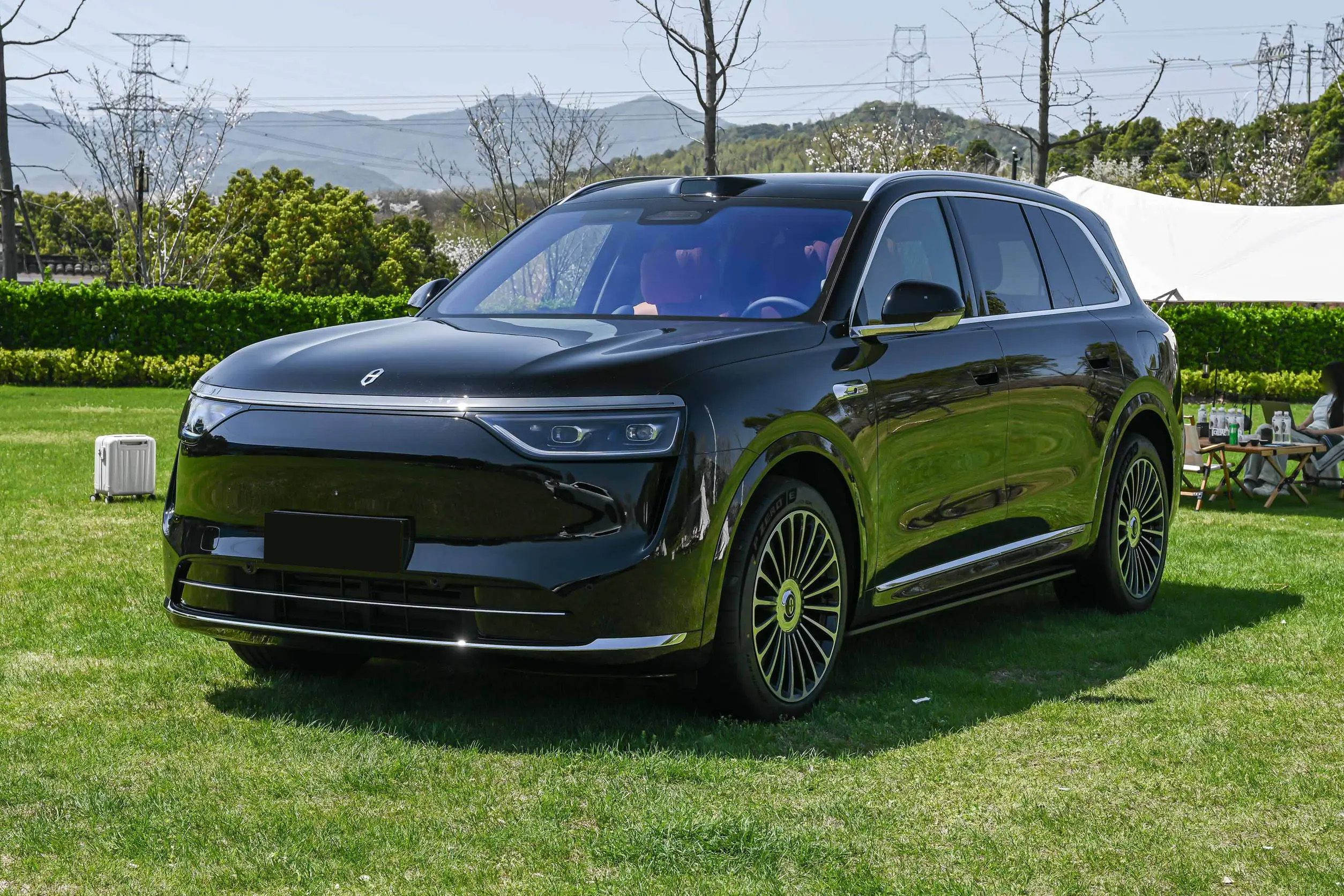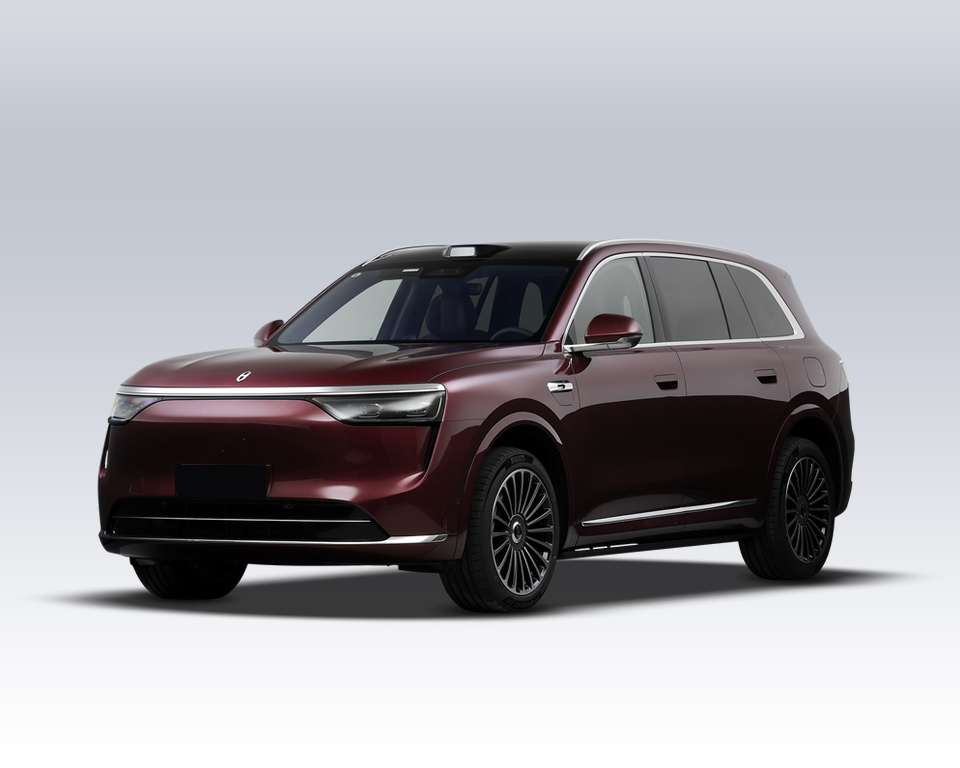2025 Shanghai Auto Show Preview: Which Major New Energy Vehicles Will Make Their Debut?
As the largest domestic auto show at the beginning of the year, the Shanghai Auto Show is now less than half a month away. Major automakers are gearing up, eager to shine at this highly anticipated event. While previous years were dominated by “price wars,” this year the spotlight has shifted to a “tech battle”—China’s emerging EV players are no longer satisfied with just loading up on features. Instead, they’re using disruptive technologies to redefine luxury and practicality.
Without further ado, let’s take a look at five heavyweight new energy models that will debut at the show.
Catalog

Xiaomi YU7: The Sibling of the Xiaomi SU7
Positioned as a mid-to-large-size all-electric SUV, the Xiaomi YU7 is expected to officially launch between June and July. It’s a sibling to the much-hyped Xiaomi SU7, with a price expected between RMB 230,000 and 300,000. It may make its first public appearance at this year’s Shanghai Auto Show.
The YU7 offers both single and dual-motor configurations, as well as versions equipped with LiDAR. It boasts a maximum range of over 800 km and a dual-motor system with a combined power output of 508 kW, achieving a top speed of 253 km/h.
Building on the technology and reputation of the SU7, Xiaomi aims to capture a significant share of the electric SUV market with the YU7’s well-rounded features and strong value proposition. It will pose stiff competition to models like the Tesla Model Y, Zeekr 7X,ONVO L60, IM LS6, Avatr 07, and the Luxeed R7.

Zeekr 9X: A “Tech Statement” from a Million-RMB Chinese SUV
The Zeekr 9X is arguably one of the biggest highlights of this year’s show. This full-size SUV, stretching over 5.2 meters long, goes head-to-head with the Mercedes-Maybach GLS. The top “Glory Edition” even breaks the million-RMB price ceiling.
Its core highlight is the “Super Electric Hybrid” powertrain—blending the strengths of pure electric, plug-in hybrid, and range-extending technologies. This setup offers a smooth electric driving experience while using direct engine drive to solve the high-speed energy consumption issue, delivering a combined range of up to 1500 km on a full charge and tank.
Previously, BYD made waves with its 1000V high-voltage + 10C fast charging setup, delivering 1MW of power and adding 407 km of range in just 5 minutes. Zeekr takes this further, introducing a 1.2MW fully liquid-cooled charging pile—20% more powerful than BYD’s.
It also debuts with dual NVIDIA Thor chips and five LiDAR sensors, reaching a computing power of 1400 TOPS. It’s the first production car in the industry claiming to support L3-level autonomous driving.
More than just selling a car, Zeekr 9X represents a bold move to challenge traditional luxury brands through “tech-driven disruption.” While legacy automakers are still struggling with the transition from ICE to EV, Zeekr redefines the value of a million-RMB luxury SUV with its hybrid platform and advanced autonomous driving. This may push legacy brands to accelerate their electrification and even shake up luxury car pricing structures.

AITO M8: The New Heavy Hitter from HarmonyOS Smart Mobility
With a starting price of RMB 368,000, the AITO M8 sits just below the flagship M9 but fully inherits Huawei’s ADS 2.0 intelligent driving system and HarmonyOS cockpit. It adopts a 6-seat layout and an extended-range system with a large battery and small fuel tank, delivering 310 km of pure electric range and 1526 km in total—meeting the “zero anxiety” needs of families.
Its smartest move is in democratizing technology—bringing the M9’s intelligent hardware to a sub-RMB 400,000 price point, directly taking on rivals like the Li Auto L8 and XPeng G9.
The AITO M8 fills the gap between the M7 and M9 in the lineup, enhancing the brand’s product matrix. Backed by Huawei’s tech reputation, it is poised to challenge traditional luxury players in the mid-to-large SUV segment.

ONVO L90: NIO’s Sub-Brand Targets the Family Market
The ONVO L90 is the first large SUV based on NIO’s NT3.0 platform and targets the RMB 250,000 family-use segment. Its key differentiator is a “reverse approach”: skipping LiDAR and instead focusing on spacious layouts (6/7-seat configurations) and battery swapping convenience. This complements the main NIO brand, addressing practical family needs through simplification.
From a strategic perspective, ONVO reflects the anxiety of leading EV startups—balancing premium branding with broader market share. By launching a sub-brand to segment the customer base, NIO may have found a path forward. However, avoiding internal brand cannibalization remains a challenge for all multi-brand strategies.

XPeng G7: Reshaping the Lineup with Cost-Effective Design
The XPeng G7 is smartly positioned in the RMB 200,000 range, between the G6 and G9. By extending the body length (139mm longer than the G6) and maintaining the same electric motor and autonomous driving system as the G6, it offers a “G9-like” presence at a lower cost. This “old platform, new packaging” strategy helps avoid internal competition while expanding into the mid-size SUV market affordably.
Across the industry, startups are now learning to “do more with less.” As tech iteration speeds outpace consumer demand, modular platforms for rapid model updates may be more sustainable than blindly adding new features. Yet, this also tests a brand’s ability to balance “value for money” with a “tech leadership” narrative.

Electric EV: Tech Competition Isn’t Scary—Not Having a Unique Edge Is
After checking out these five models at the 2025 Shanghai Auto Show, it’s clear that the new energy competition has moved beyond price wars. Xiaomi is using modularity and ecosystem integration to break spec boundaries, Huawei is leveraging smart driving and ecosystem stickiness, Zeekr is disrupting with hybrid innovation, ONVO is pushing battery swapping, and XPeng is reducing costs through smart platform reuse. Not to mention Li Auto’s refreshed models and the debut of the Ideal I8…
The common thread? These brands are no longer following trends—they’re rewriting the rules.
The 2025 new energy market will belong to brands that not only build cars but also create buzz. While legacy automakers are still debating whether to adopt 800V architecture, the EV startups are already asking: How can I make users stick to my ecosystem?
After this Shanghai Auto Show, the industry may reach a new consensus: Specifications are just the ticket—experience is the real ace.
Please explore our blog for the latest news and offers from the EV market.





